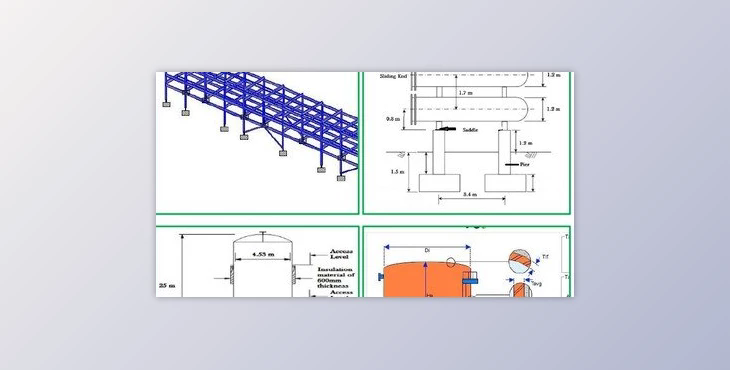
Onshore Structural Design–Step-By-Step Calculations: This course provides a comprehensive overview of one area of civil engineering, explicitly designing structures onshore. The various types of structures in the plant are discussed, and how to design the support structures. The fundamental structures are vertical vessels, horizontal vessels, above-ground storage tanks made of steel, and pipe racks. A bird's eye view of the various plant facilities is made simpler. This has been possible because petrochemical plants and industrial facilities have similar structures but serve different reasons. So for those who are just beginning to learn about this area in civil engineering, this course will take one up to a professional stage.
The course presents an elevated view of the petrochemical, plant, and industrial structures. From this perspective, it is possible to see a summary of the similarities between various facilities presented. Following that, the aspects of the design of the layout of a plant facility are covered. The focus is then shifted to the atmosphere for explosions and ATEX zones.
The next step is the design of support structures to support vertical vessels. In this class, horizontal vessels are divided into horizontal vessels and heat exchangers. The various load cases, and the vertical support that needs to be designed, are identified. Then vertical vessels are built to be used. Vertical vessels' maintenance support components are the pedestal and footing segments. The criteria for selecting an octagonal or square footing and pedestal are described.
After that, the design of the above-ground storage tanks made of steel is completed. Contrary to the horizontal and vertical vessels manufacturers supply, an engineer in structural engineering creates the above-ground storage tank.
The course ends by examining pipe rack design as well as load calculation. Pipe racks are an arrangement of frames. How to calculate the distance between frames is discussed during the class. In addition, they are choosing the structural members to use and estimating the load.
In the course, there are printable manual calculation sheets. These calculation sheets are to be studied, and the steps are repeated to complete the calculation assignment. The code references are done in a logical method to facilitate understanding of manual calculations as well as relevant codes of conduct.
To verify the calculations made by hand to ensure personal safety, installing STAAD Foundation software is necessary. Sheets for calculation with this program are also available and can be used to verify the manual calculations in the book. The inputs into STAAD Foundation are also downloadable.